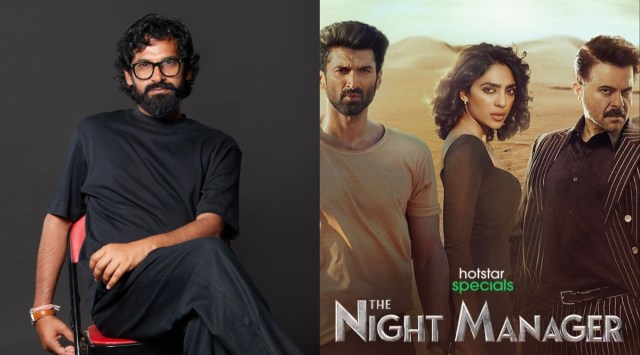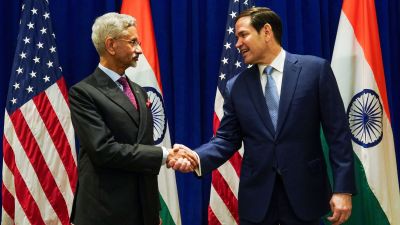“If you carefully notice in one of the scenes, there are these stone like structures which are moving with the wind,” production designer Saini S Johray laughs as he tells indiaexpress.com how the team pulled off the mammoth task to build the show’s set in Sri Lanka, as the country was battling economic crisis. “We wanted big sculpture’s because it’s Rungta’s villa, but we made them of thermocol because renting out actual stone structure was costing us a lot!”

Directed and created by Sandeep Modi, the Disney Plus Hotstar show debuted its first season in February and received praise. As the show’s season two, headlined by Anil Kapoor, Aditya Roy Kapur, Sobhita Dhulipala, gears up for its release on June 30, Johray reveals how his team stepped up to work on the show “pretty much last minute”.
Story continues below this ad
Johray, who has been a production designer on shows like The Family Man, Inside Edge 3 and Netflix’s Tooth Pari, said The Night Manager team was already in the “middle of shooting” when he got a call for a meeting. It was the first day of the shoot and something “wasn’t going right”. The team was starting the next schedule in a week’s time in Sri Lanka and wanted him to be a part of it.
“But I was like it’s too less a time! Ideally, the time period I take for a show for like The Night Manager or The Family Man is 2-3 months,” he said. The first month Johray studies the script to prepare a mood board. In the second month, he checks for locations as per the designs and if the locations are not working, his team starts making 3D designs of the set which can be implemented.
The third month is sourcing and renting furniture for sets and showing samples to the director and the director of photography. But for The Night Manager, Johray had to squeeze in his process of three months in “less than a week”.
 The Night Manager set. (Photo: PR handout)
The Night Manager set. (Photo: PR handout)
 The Night Manager set. (Photo: PR handout)
The Night Manager set. (Photo: PR handout)
 The Night Manager set. (Photo: PR handout)
The Night Manager set. (Photo: PR handout)
“I told them I wouldn’t be able to do justice to the project. Then they told me to meet the director and listen to the narration and when I understood the director’s vision, I loved it. So, I took it up as a challenge. Also, somehow the makers had huge faith in me.”
Story continues below this ad
Once the production designer took up the show, he said he planned everything before going on floors. “I had almost 20 assistants with me, around 80 workers in Sri Lanka. Four-five assistants were with me in Mumbai.” His team broke down the script, with Johray asking the makers what they were shooting first.
“So, we focused on the first week of the shoot, rather than thinking what we are going to shoot after 15 days. So, accordingly we planned. I put up a team in Mumbai which started sourcing for the scenes. I immediately sent a team to Colombo which started sourcing stuff from there because we couldn’t carry furniture from Mumbai as that would cost a lot, and we didn’t even have that much time.
“The first set up was itself the biggest possible, which was Mr Rungta’s villa. We were shooting at a location 2.5 hours away from Colombo, so the local team did the whole sourcing. In four-five nights, we created the whole set up.”
The production designer said everything was “last minute”, but the producer had certain budget for production design. The team was also aware that they had to pull off the task amid the economic crisis, where everything was costing Rs 500 extra. Johray got in touch with line producers in the country, who gave him a helping hand with everything– from local place to connecting with the right people.
Story continues below this ad
“We also understood the economic crisis in Sri Lanka so budget could go haywire. But what we did smartly was, rather than renting out furniture which would have cost us a lot, with the locals’ help we started pulling out old furniture from Colombo market, like we have old furniture markets here in India.
“I made a separate fabric team. So, for example, we picked an old sofa from a Colombo market, then I ask my fabric team what kind of fabric will go with this sofa and how many meters we would need. Then they would show me samples and once decided, our workers would make it according to our set design and requirement. This how we worked day and night and finished the task. It was very, very challenging,” he added.




 The Night Manager set. (Photo: PR handout)
The Night Manager set. (Photo: PR handout) The Night Manager set. (Photo: PR handout)
The Night Manager set. (Photo: PR handout) The Night Manager set. (Photo: PR handout)
The Night Manager set. (Photo: PR handout)































